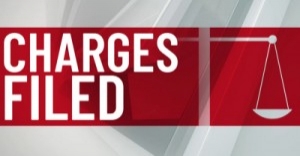

In early childhood education, ratios are more than numbers. They are the heartbeat of safety, connection, and quality care. Yet across Australia, educators are sounding the alarm: current ratios are failing both children and staff. The sector is bleeding talent, and the emotional toll is mounting. It’s time to reform ratios—not just to meet minimum standards, but to honour the dignity of every child and the well-being of every educator.
The concept of supervision zones is a practical strategy to enhance child safety and educator accountability where educators are assigned to actively supervise and engage with children.
These critical reflection questions invite educators to look beneath the surface. To interrogate not just what ratios are, but what they do. How they impact our ability to see every child, respond to every need, and show up as our full selves. It challenges us to name the invisible labor, the moral compromises, and the quiet grief that ratio pressures can bring—while also illuminating the courage, creativity, and collective wisdom that educators embody every day.
In early childhood education and care, child safety is not just a number—it’s a practice. While educator-to-child ratios are essential, they are only one part of a broader obligation: ensuring adequate supervision at all times. Together, these two pillars—Regulation 122 and Section 165—form the foundation of safe, responsive, and compliant care.
Across Australia, regulated staffing ratios aim to safeguard children in early learning settings. However, a growing number of incidents reveal that meeting these minimum requirements on paper doesn’t always translate into active, vigilant supervision. Below are several case studies that illustrate how gaps can emerge—even when legal ratios are nominally met.
Recent charges against two childcare workers in Western Sydney have reignited critical conversations about child safety, supervision practices, and compliance structures in early learning centers. On June 26, a 17-month-old child was allegedly assaulted twice in separate incidents on the same day—each involving a different educator—raising concerns about how such occurrences go undetected.
We’ve built a sector where “under the roof” staffing logic can mask supervision breakdowns. Where ratios are met on paper, but no one is actively watching. Where a child can be harmed twice in one day—and no one notices until it’s too late.
We need to stop pretending that minimum standards are enough. Because they’re not. Children deserve active supervision, not passive headcounts. Educators deserve clear protocols, not vague staffing models.
The following list of questions helps educators critically reflect on their supervision practices, ensuring a balance between safety, engagement, and autonomy.
 The Australian Government is rolling out unannounced spot checks across Early Childhood Education and Care (ECEC) services nationwide. This follows a successful pilot in October–November… Read More
The Australian Government is rolling out unannounced spot checks across Early Childhood Education and Care (ECEC) services nationwide. This follows a successful pilot in October–November… Read More
 ***WARNING: DISTRESSING CONTENT*** Victorian detectives have laid 83 additional charges against former Melbourne childcare worker Joshua Dale Brown, expanding the total number of alleged offences… Read More
***WARNING: DISTRESSING CONTENT*** Victorian detectives have laid 83 additional charges against former Melbourne childcare worker Joshua Dale Brown, expanding the total number of alleged offences… Read More
 In April 2025, the Fair Work Commission (FWC) issued a provisional decision recommending staged award increases to address the undervaluation of early childhood educators; however,… Read More
In April 2025, the Fair Work Commission (FWC) issued a provisional decision recommending staged award increases to address the undervaluation of early childhood educators; however,… Read More
 Regulatory authorities across Australia have identified staffing as a priority area, with a strong focus on ensuring educators hold valid, authentic qualifications. Unfortunately, fraudulent certificates… Read More
Regulatory authorities across Australia have identified staffing as a priority area, with a strong focus on ensuring educators hold valid, authentic qualifications. Unfortunately, fraudulent certificates… Read More
 Recent commentary has highlighted a striking statistic: 90% of new childcare providers in Australia are run for profit. This raises a fundamental question is this… Read More
Recent commentary has highlighted a striking statistic: 90% of new childcare providers in Australia are run for profit. This raises a fundamental question is this… Read More
© 2009-2025 Aussie Childcare Network Pty Ltd. All Rights Reserved.
